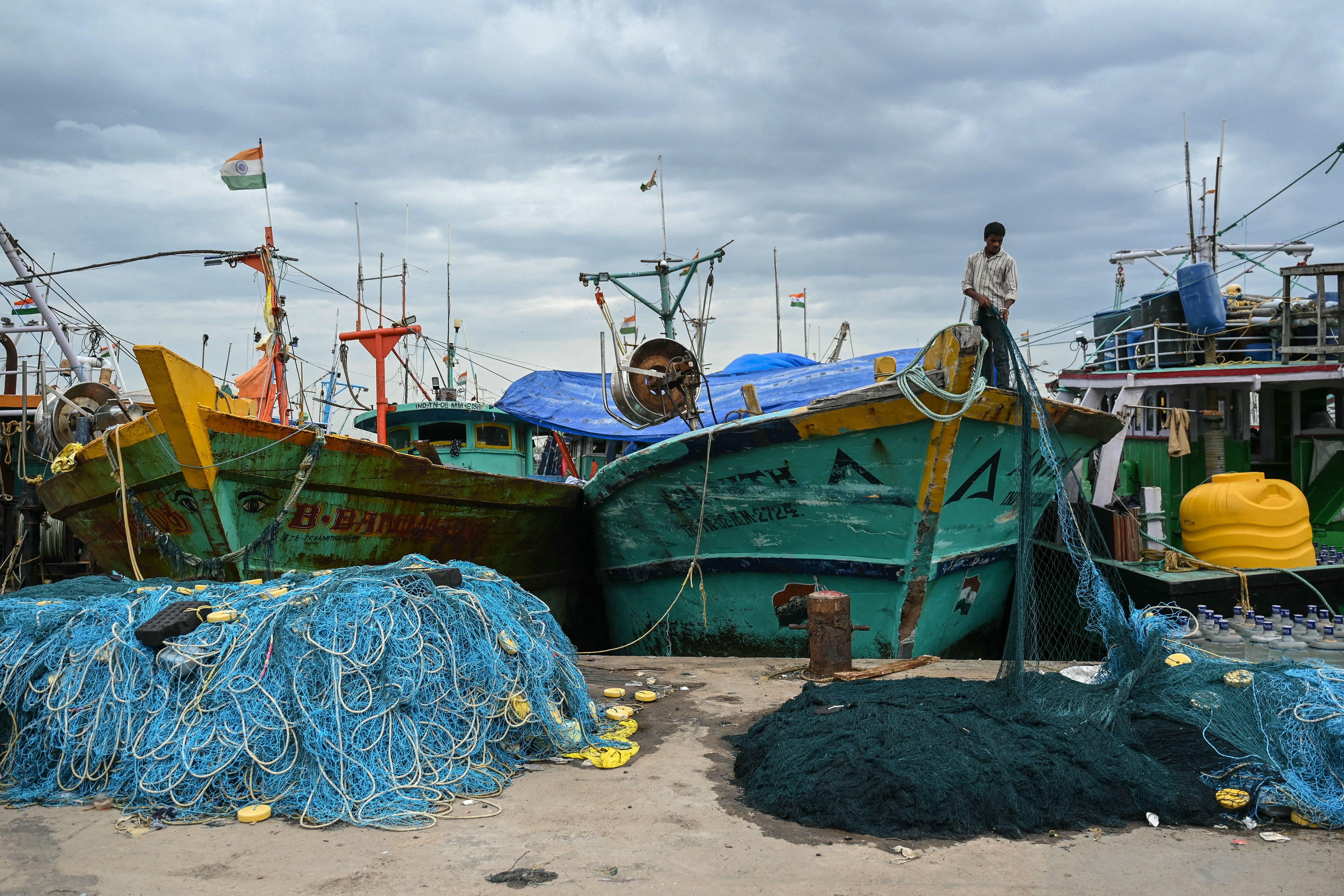Annotated Bibliography: Chinese Maritime Militia and Illegal, Unreported, and Unregulated (IUU) Fishing – Small Wars Journal

Report on Chinese Maritime Militia, IUU Fishing, and Implications for Sustainable Development Goals
Executive Summary
This report analyzes the activities of the People’s Republic of China (PRC) Maritime Militia and its associated fishing fleets, focusing on the practice of Illegal, Unreported, and Unregulated (IUU) fishing. These operations represent a form of irregular and unconventional maritime strategy used for force projection and hybrid influence. The report assesses these actions through the framework of the United Nations Sustainable Development Goals (SDGs), demonstrating a significant negative impact on global environmental, economic, and security objectives.
Strategic Dimensions of Maritime Operations
The Role of the Chinese Maritime Militia
The Chinese Maritime Militia (CMM) functions as a key component of the PRC’s armed forces, operating as a paramilitary organization to advance national interests in maritime gray zones. Its primary functions include:
- Asserting disputed territorial claims, particularly in the South China Sea.
- Conducting surveillance and intelligence gathering.
- Harassing and intimidating foreign civilian and military vessels.
- Supporting the People’s Liberation Army Navy (PLAN) and China Coast Guard (CCG) in various operations.
Illegal, Unreported, and Unregulated (IUU) Fishing as a Core Component
IUU fishing is intrinsically linked to the CMM’s strategic mission. The vast Chinese fishing fleet, the world’s largest, serves a dual purpose. While engaged in commercial fishing, many vessels are integrated into the CMM structure. This allows the PRC to maintain a persistent presence in contested waters under the guise of civilian activity, complicating international responses and escalating regional tensions.
Impact on Sustainable Development Goals (SDGs)
The convergence of CMM activities and state-supported IUU fishing directly undermines several key SDGs, threatening global progress towards a sustainable and peaceful future.
SDG 14: Life Below Water
The most direct and severe impact is on the health of our oceans. The goal to “conserve and sustainably use the oceans, seas and marine resources” is jeopardized by:
- Overfishing: Industrial-scale IUU fishing leads to the rapid depletion of fish stocks, pushing many species towards collapse and disrupting marine food webs.
- Habitat Destruction: Destructive practices such as bottom trawling and giant clam harvesting destroy vital marine habitats, including coral reefs and seagrass beds, which are critical for biodiversity.
- Undermining Regulation: By definition, IUU fishing flouts international and national conservation and management measures, rendering efforts to achieve sustainable fisheries ineffective.
SDG 16: Peace, Justice and Strong Institutions
The use of the CMM and IUU fishing fleets erodes the foundations of global maritime governance and peace. This goal, which aims to “promote peaceful and inclusive societies,” is threatened by:
- Erosion of International Law: These actions challenge the principles of the UN Convention on the Law of the Sea (UNCLOS), undermining the legal framework that governs maritime activities.
- Increased Conflict Risk: Aggressive behavior by the CMM against the vessels of other nations increases the risk of miscalculation and escalation, threatening regional stability.
- Weakening of Institutions: The inability of regional and global institutions to effectively counter these gray-zone tactics weakens their authority and the rule of law at sea.
SDG 2 (Zero Hunger) and SDG 8 (Decent Work and Economic Growth)
The economic and social consequences of these maritime activities are profound, impacting food security and livelihoods globally.
- Threats to Food Security (SDG 2): The depletion of fish stocks by foreign IUU fleets deprives coastal communities in developing nations of a critical source of protein and food.
- Economic Sabotage (SDG 8): IUU fishing undermines the national economies of coastal states that depend on revenue and employment from their legal domestic fishing industries.
- Labor Abuses (SDG 8): Many vessels involved in IUU fishing are associated with poor safety standards and forced labor, directly contravening the goal of “decent work for all.”
Conclusion and Recommendations
The activities of the Chinese Maritime Militia and its engagement in IUU fishing constitute a multifaceted threat to the international community. This threat extends beyond traditional security concerns to directly impede the achievement of the Sustainable Development Goals. Addressing this challenge requires a coordinated international response rooted in SDG 17: Partnerships for the Goals.
The Imperative of SDG 17: Partnerships for the Goals
A robust, multilateral approach is necessary to counter these destabilizing activities. Key actions should include:
- Strengthening international and regional partnerships to enhance maritime domain awareness and share intelligence on CMM and IUU fishing activities.
- Increasing capacity-building support for the coast guards and fisheries enforcement agencies of affected nations.
- Applying coordinated diplomatic and economic pressure, including sanctions and market restrictions, to deter state-sponsored IUU fishing.
- Reinforcing the primacy of international law, particularly UNCLOS, as the sole framework for resolving maritime disputes.
Analysis of SDGs, Targets, and Indicators
1. Which SDGs are addressed or connected to the issues highlighted in the article?
-
SDG 14: Life Below Water
This goal is directly addressed as the article’s central theme is “Illegal, Unreported, and Unregulated (IUU) Fishing.” IUU fishing is a primary threat to the conservation and sustainable use of oceans, seas, and marine resources, which is the core objective of SDG 14.
-
SDG 16: Peace, Justice and Strong Institutions
The article connects IUU fishing to the “Chinese Maritime Militia” and describes their activities as “irregular and unconventional maritime operations” and a “means of force projection and hybrid influence.” This highlights a breakdown in the rule of law at sea and challenges to international governance and peace, which are central concerns of SDG 16.
2. What specific targets under those SDGs can be identified based on the article’s content?
-
Target 14.4: End overfishing, illegal, unreported and unregulated fishing
- The article’s title and description explicitly name “Illegal, Unreported, and Unregulated (IUU) fishing” as a core element of the discussion. This target aims to “effectively regulate harvesting and end overfishing, illegal, unreported and unregulated fishing and destructive fishing practices,” which is precisely the issue at hand.
-
Target 14.6: Prohibit certain forms of fisheries subsidies which contribute to overcapacity and overfishing
- The article’s mention of “Chinese Maritime Militia and fishing fleets” being used for “force projection” implies a level of state organization and support. Such state support often includes subsidies that contribute to overcapacity and IUU fishing, making this target highly relevant to the context of state-sponsored fishing operations.
-
Target 14.c: Enhance the conservation and sustainable use of oceans and their resources by implementing international law
- The description of “irregular and unconventional maritime operations” suggests activities that operate outside of or in defiance of international maritime law, such as the UN Convention on the Law of the Sea (UNCLOS). Combating IUU fishing inherently involves the implementation and enforcement of such international laws.
-
Target 16.4: Significantly reduce illicit financial and arms flows, strengthen the recovery and return of stolen assets and combat all forms of organized crime
- “Illegal, unreported, and unregulated (IUU) fishing” is recognized as a form of transnational organized crime. The article frames it as an “evolving threat,” aligning with the goal of combating such illicit activities.
3. Are there any indicators mentioned or implied in the article that can be used to measure progress towards the identified targets?
-
Indicator 14.4.1: Proportion of fish stocks within biologically sustainable levels
- While not explicitly stated, the concern over IUU fishing is fundamentally a concern about its impact on fish populations. The practice leads to overfishing and the depletion of stocks. Therefore, the health of fish stocks is an implied key indicator of the severity of the problem and of progress in combating it.
-
Indicator 14.6.1: Progress by countries in the degree of implementation of international instruments aiming to combat illegal, unreported and unregulated fishing
- The article, an annotated bibliography, is a tool for understanding the “threat” of IUU fishing. This implies a need for a response, which is measured by how well countries implement international agreements and instruments designed to stop these practices. The actions of the “Chinese Maritime Militia” represent a challenge to this implementation.
-
Implied Indicator: Number and scale of IUU fishing incidents
- The article focuses on documenting and understanding the operations of the “Chinese Maritime Militia and fishing fleets.” A direct, though not official, indicator for measuring the problem would be the frequency, location, and scale of documented IUU fishing incidents attributed to these fleets.
4. Summary Table of SDGs, Targets, and Indicators
| SDGs | Targets | Indicators |
|---|---|---|
| SDG 14: Life Below Water | Target 14.4: By 2020, effectively regulate harvesting and end overfishing, illegal, unreported and unregulated fishing and destructive fishing practices… | Indicator 14.4.1: Proportion of fish stocks within biologically sustainable levels. (Implied by the negative impact of IUU fishing). |
| SDG 14: Life Below Water | Target 14.6: By 2020, prohibit certain forms of fisheries subsidies which contribute to overcapacity and overfishing, eliminate subsidies that contribute to illegal, unreported and unregulated fishing… | Indicator 14.6.1: Progress by countries in the degree of implementation of international instruments aiming to combat illegal, unreported and unregulated fishing. |
| SDG 14: Life Below Water | Target 14.c: Enhance the conservation and sustainable use of oceans and their resources by implementing international law as reflected in the United Nations Convention on the Law of the Sea… | Implied Indicator: Level of compliance with international maritime law (e.g., UNCLOS) by state and non-state actors. |
| SDG 16: Peace, Justice and Strong Institutions | Target 16.4: By 2030, significantly reduce illicit financial and arms flows, strengthen the recovery and return of stolen assets and combat all forms of organized crime. | Implied Indicator: Number and scale of documented incidents of IUU fishing, treated as a form of transnational organized crime. |
Source: smallwarsjournal.com

What is Your Reaction?
 Like
0
Like
0
 Dislike
0
Dislike
0
 Love
0
Love
0
 Funny
0
Funny
0
 Angry
0
Angry
0
 Sad
0
Sad
0
 Wow
0
Wow
0









































































